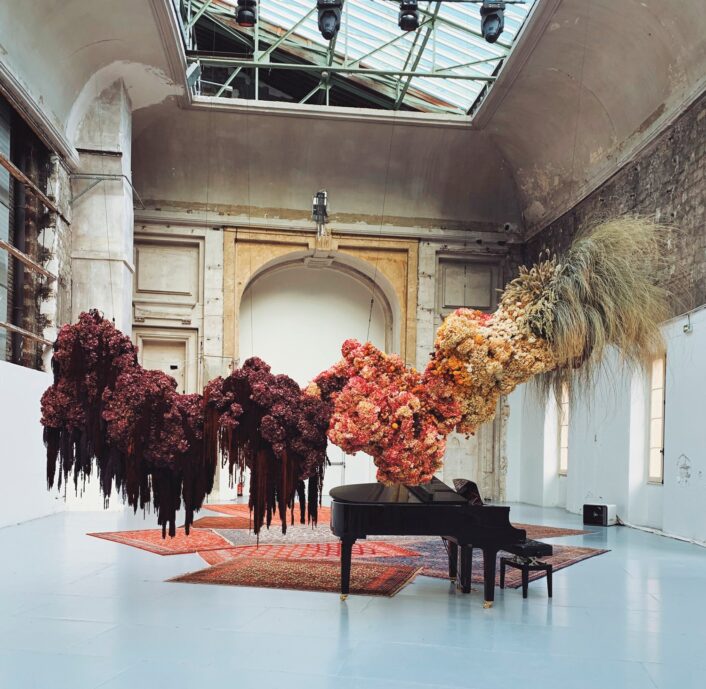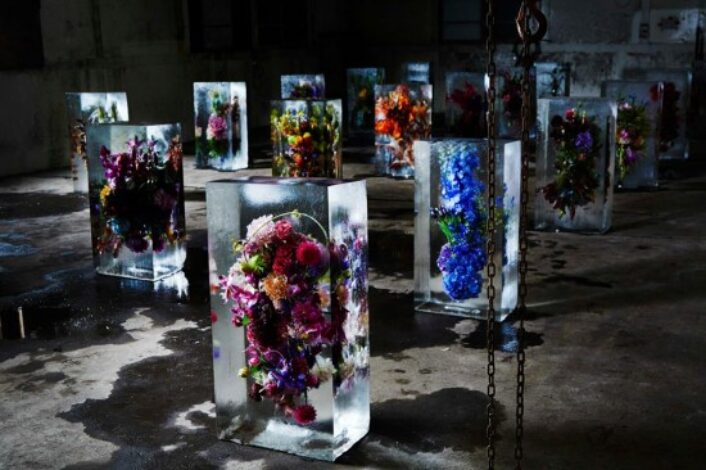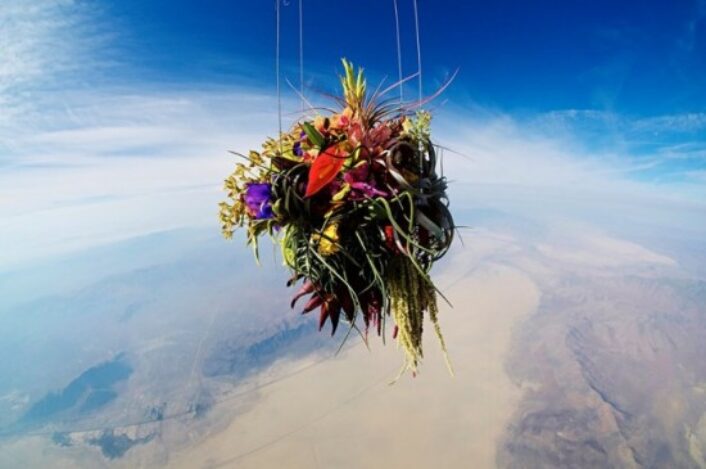Culture
Jamie North’s Living Sculptures
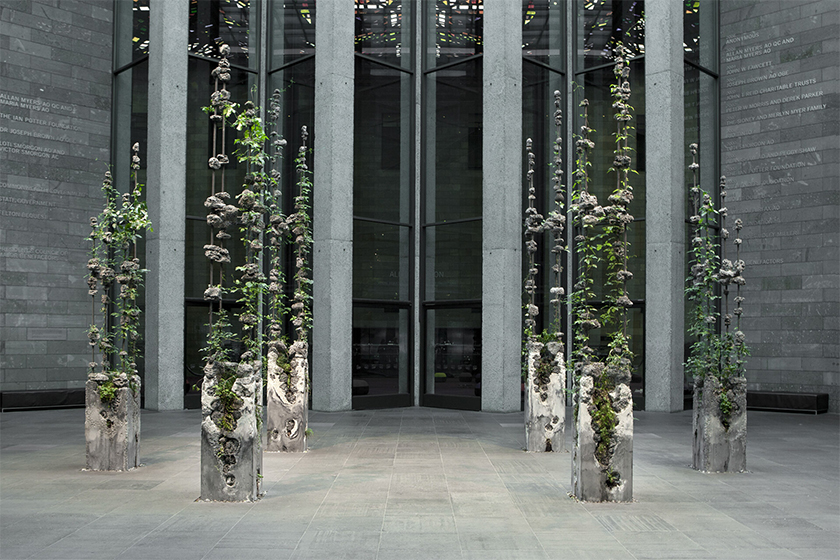
“Rock Melt,” 2015. Made from cement, blast furnace slag, expanded glass, iron oxide, and steel; filled with native Australian plants.
Image courtesy of: This Is Colossal
Jamie North, an Australian sculptor, explores the tender relationship between human-made items and nature’s plants. The artist’s work seems to toe the line between artificial and natural, and between other contrasts such as “progress and collapse, industry and ruin, melancholy and triumph.”
The relationship between humans and the natural world around them provides avenues to many different forms of creativity and insights. Scientists look at these interesting principles scientifically and authors look at this connection through a resourceful lens. North hopes that his work will force us to re-evaluate the human-nature connection a bit more deeply; in such, forcing us to reflect on how nature affects our lives.
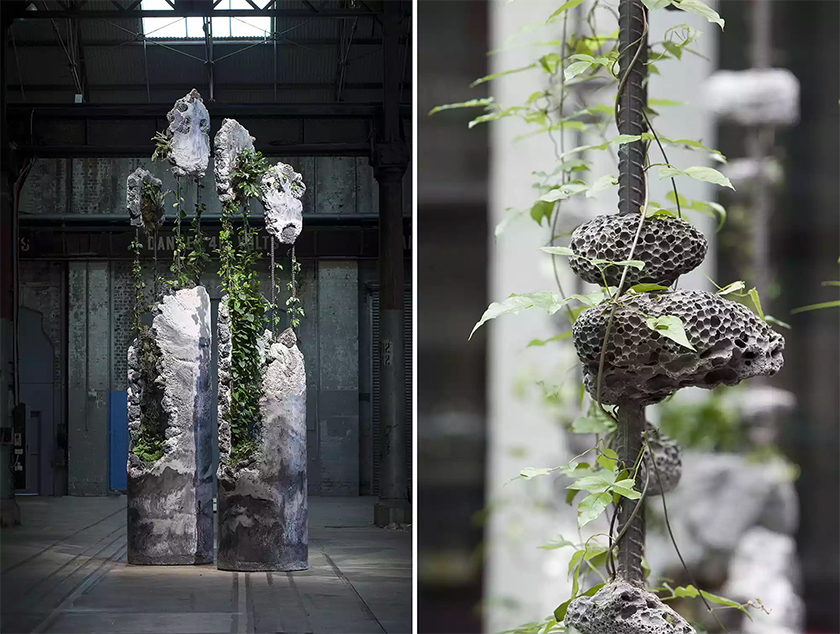
“Succession,” 2016 (left)- cement steel recycled glass, oyster shell, blast furnace slag, coal ash, organic matter, and native Australian plants.
“Rock Melt,” 2015, (right)- cement, iron oxide, steel, expanded glass, blast furnace slag, and native Australian plants.
Image courtesy of: Treehugger, photographed by Ashley Barber
Kangaroo vines, kidney weeds, and Port Jackson figs wrap themselves effortlessly around North’s steel cables and grow out of the cracked-stone forms’ crevices. The eroded and marble pillars are an amazing juxtaposition against the organic elements that peek out from within.
It is the choice of materials that make the contrast even more dramatic. Sometimes, the items are reclaimed industrial by-products… Regardless, what is the same is that the sculptures always start off well-founded at the base. As you look up, the pillars seem to crumble away until greenery is what remains left, gradually rising up and overtaking the solid mass.
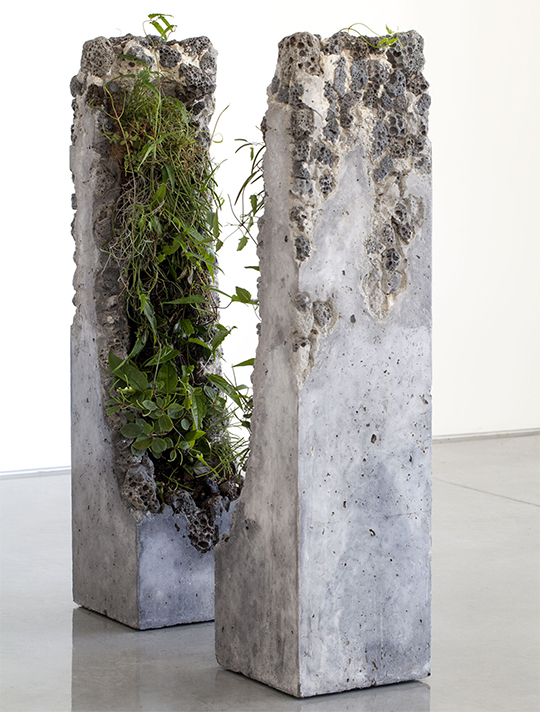
“Terraforms,” 2014. Made from cement, limestone, organic matter, marble waste, coal ash, and native Australian plants.
Image courtesy of: This Is Colossal, photographed by: Ashley Barber
A quick glance makes it seem as though the sculptures are simple; however there is a lot of thought and effort that goes into producing them. The creative process starts with North modeling the idea on paper or in a computer program. Following this vital step, supportive steel armatures (if necessary) are built and a formwork constructed from either cardboard or plywood is made. Finally, more detailed molds out of clay are produced as the larger aggregates that will be exposed at the end step.
North explains that these pieces and molds work as a “negative” sculptural form which has a big influence on the final “positive” three-dimensional imprint. He told Aethetic, “Once this negative sculpture is completed, the concrete mix is poured in, vibrated and left to cure before being stripped. Final finishing involves scraping away the clay which in my mind is reminiscent of an archaeological process, as the material placements and decisions behind these are revealed.”
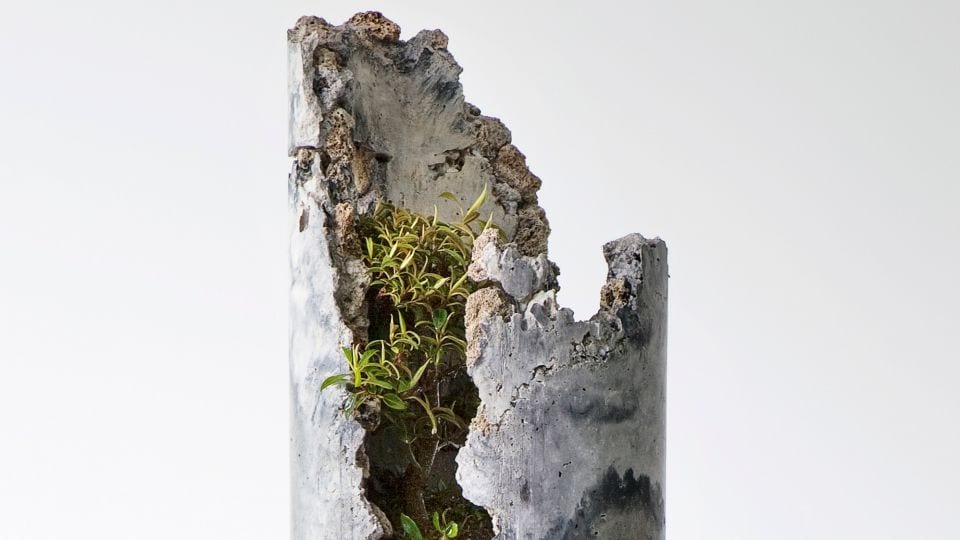
“Rock Melt” has found a home at The National Gallery of Victoria in Melbourne.
Image courtesy of: Aesthetica
In addition to choosing the right man-made materials, North spends a lot of time contemplating which plants to use. The right plant needs to populate the recycled industrial forms. For examples, the sculptural series, “Rock Melt” uses wonga wonga vines. This indigenous Australian woody vine typically climbs up and integrates vertically… a necessary element for the purpose. Furthermore, the wonga wonga vine is common through Australia’s diverse ecosystems.
North adds (courtesy of an article with Kimberely Mok for Treehugger), “Over time, this vine becomes very woody and will meld with sculpture, blurring the distinction between the organic and the inorganic and becoming part of the work’s structure.”
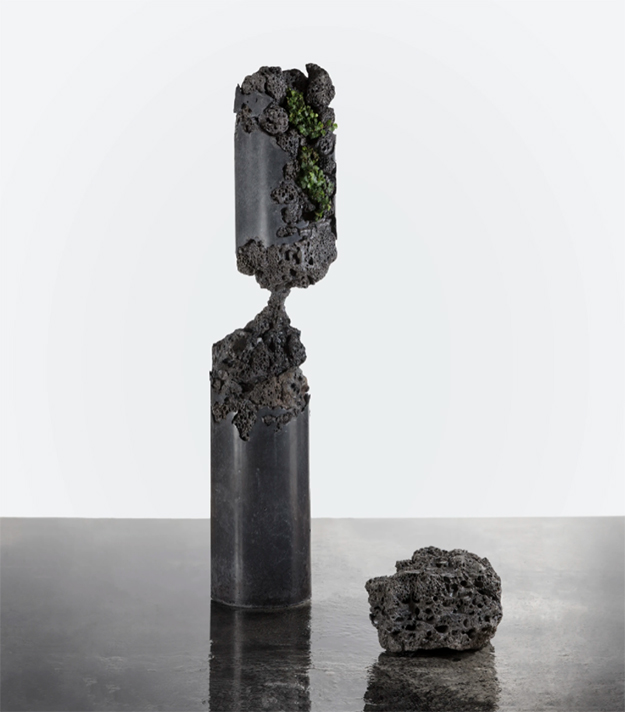
“Forward Projection,” 2019. Made from concrete, steel, blast furnace slag, epoxy, and British ferns and ivy.
Image courtesy of: Informality
North starts each project with a vertical work that has a geometric cast which mimics the shape of a column. Once completed, the sculpture’s size effortlessly references different architectural elements. He explains how he concludes a piece (courtesy of This Is Colossal), “Both tower and column are often associated with progress, triumph, and hubris. These associations are addressed in my work by preemptive material erosion making the object conducive to plant sustainment, growth, and eventual merger with the inorganic form.”
It is often say that “Opposites Attract”… we can’t think of a more suitable example of that statement!
